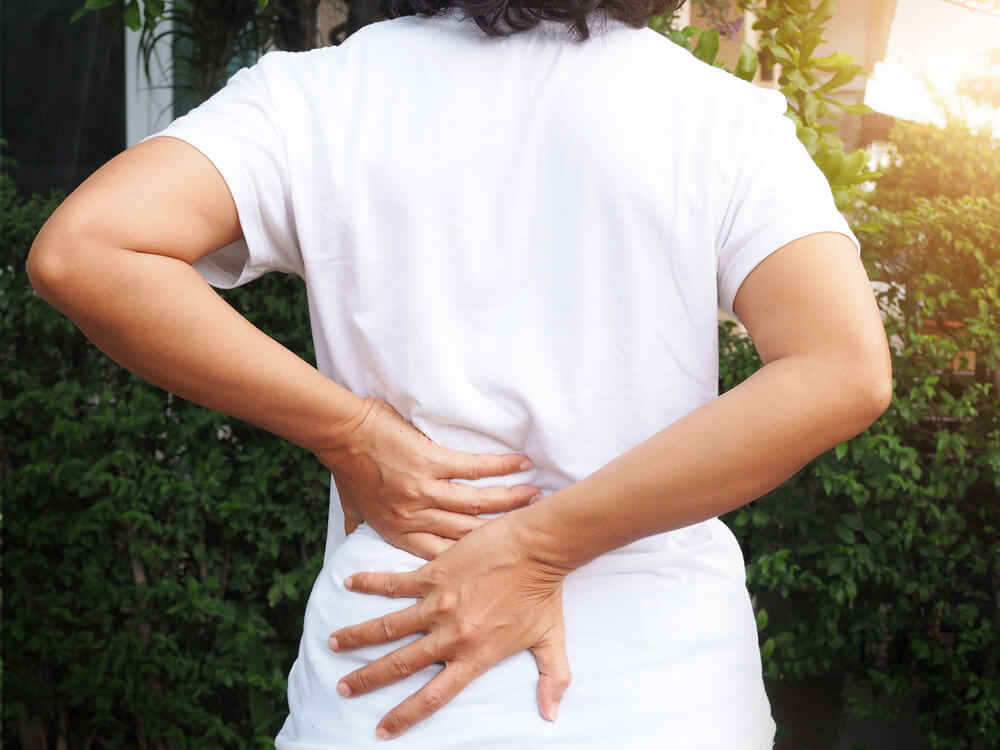We’ve all felt a twinge in our lower back when we stand for too long in one spot or after a good workout. But there are some lower back aches that aren’t temporary and shouldn’t be brushed off. If you’re feeling consistent or worsening pain in your lower back, there might be a possibility that you have sustained an injury or that it’s a symptom of a condition that needs further medical assistance.
A lower back ache can interfere with your quality of life, which is why it’s important to pinpoint the cause behind the pain. Once you determine the reason for your pain, then you can explore the treatment options that will be most efficient for alleviating it.
Read on to learn about the basics of lower back pain, potential causes behind it and treatment options to help alleviate the ache in your lower back.
The basics of lower back aches
A lower back ache refers to pain in the bottom of your spine, also known as the lumbar region. Lower back pain is the leading cause of disability around the world and affects hundreds of millions of people every year. Up to 23% of the global population experiences chronic low back pain, which means that the ache lasts for three or more months.
Lower back pain often flares up:
- After sitting for extended periods of time.
- While lifting or moving heavy objects.
- When bending down.
A backache can also be coupled with other symptoms, including:
- Stiffness after extended periods of inactivity.
- Weakness or numbness.
- Pain that radiates from hips and lower legs.
- Muscle spasms.
5 causes of lower back aches
It can be frustrating to try to determine the cause of your backache. Seeing how your symptoms align with different injuries or medical conditions, may help you figure out which one is behind your ache and the proper way to treat it.
Here are five potential causes of lower back aches:
- Muscle strain — You can stretch or tear the muscles in your lumbar region due to overexertion or trauma, resulting in a strain that causes pain and limited range of motion. A muscle strain can stem from gradual overuse over time or trauma due to an accident or fall.
- Arthritis — Arthritis can affect any area of the body, including the lower back. In fact, arthritis in the spine is the most common cause of lower back pain. The two types of arthritis that can affect the spine are osteoarthritis and rheumatoid arthritis. Arthritis can cause pain as well as stiffness that reduces your range of motion.
- Sciatica — Your sciatic nerve runs from your lower back down both of your legs. Sciatica, or a similar condition called lumbar radiculopathy, is pain caused by pressure placed on the sciatic nerve or a nerve root originating from the lumbar spine. The pressure can cause the nerve to become compressed and inflamed. Sciatica symptoms include lower back aches as well as weakness and tingling or pain in the legs.
- Herniated disc — There are discs located between the vertebrae in your spine that work as shock absorbers. If there is a tear in the annulus, which is the exterior of the disc, the nucleus from the center can leak out and push against the nerves. A herniated disc, also known as a slipped or ruptured disc, can cause pain, numbness and weakness.
- Spinal stenosis — This condition refers to your spinal canal becoming narrow and applying pressure to your spinal cord and surrounding nerves. It can be caused by disc degeneration, injuries, osteoarthritis and bone spurs. It can result in lower back aches as well as numbness and weakness.
Treatment options for lower back aches
Lower back pain can be frustrating, but there are treatment options available that can help to reduce the ache and increase your mobility. Some are self-care options that you can do at home, and others require the assistance of a health care professional, such as a licensed physical therapist.
If you’re looking to alleviate your lower back pain at home, you can apply a hot compress to the affected area. The heat will relax the tight or strained muscles. It can also increase the blood circulation to accelerate the healing process. Rest is an essential treatment for alleviating back pain, especially when it’s caused by an injury.
Physical therapy is one of the best treatment options for lower back pain. A physical therapist can use a variety of techniques to help alleviate the pain, such as manual therapy and targeted exercises. Manual therapy refers to techniques where the therapist uses their hands to help alleviate the tension in the soft tissue. For lower back aches, they may try spinal manipulation or soft tissue mobilization.
A physical therapist can also walk you through safe and effective exercises that will strengthen your back muscles to increase your mobility and reduce pressure on your nerves.
Advent Physical Therapy can treat your lower back ache
Lower back pain can make it difficult to do any sort of movement, but the physical therapists at Advent Physical Therapy are here to help you get back to your normal physical activities. Not only can we help determine the cause of your lower back ache, we can also design a treatment plan specifically for your needs, medical history and physical abilities.
Contact our team today for more information or to schedule an initial appointment.

